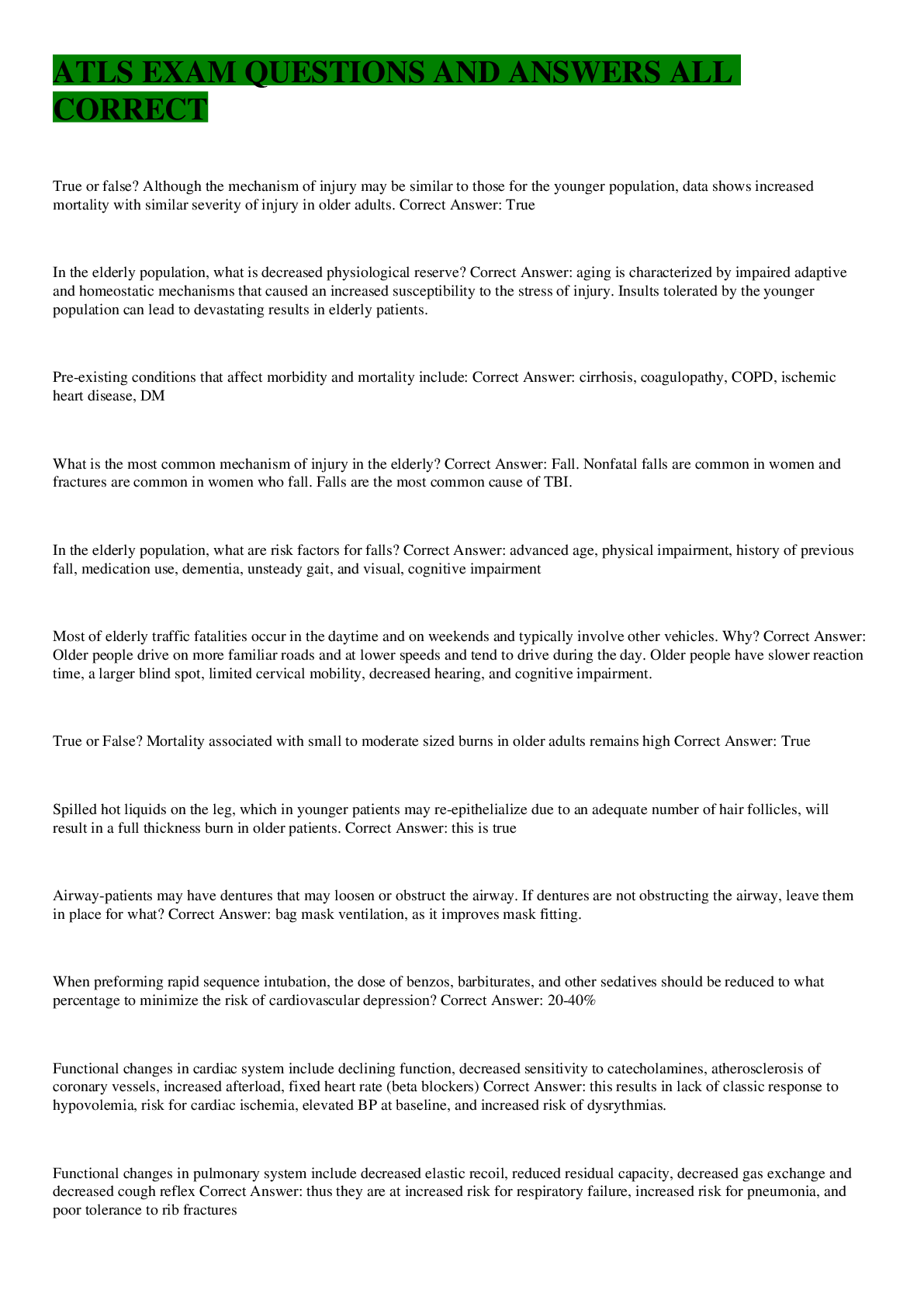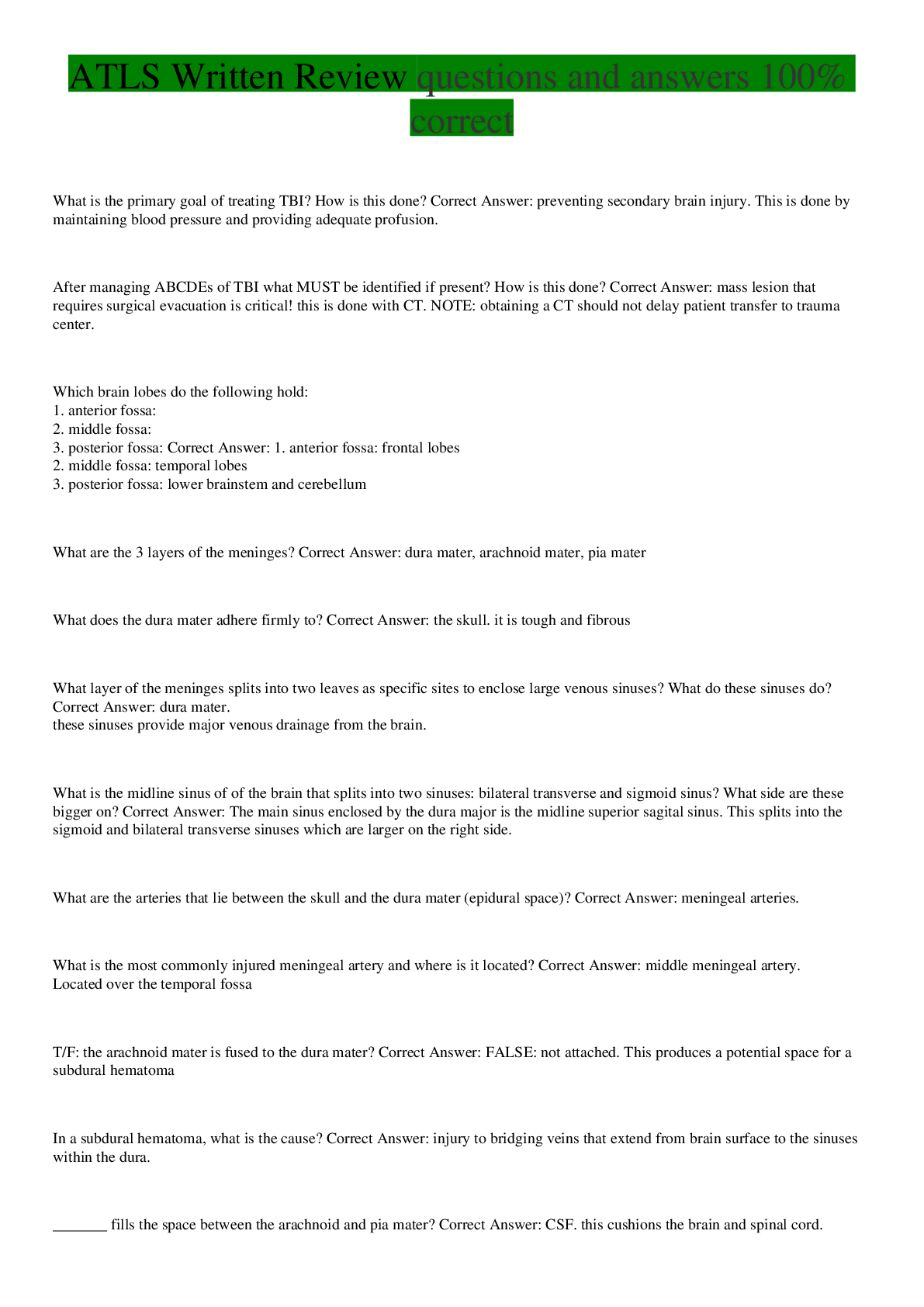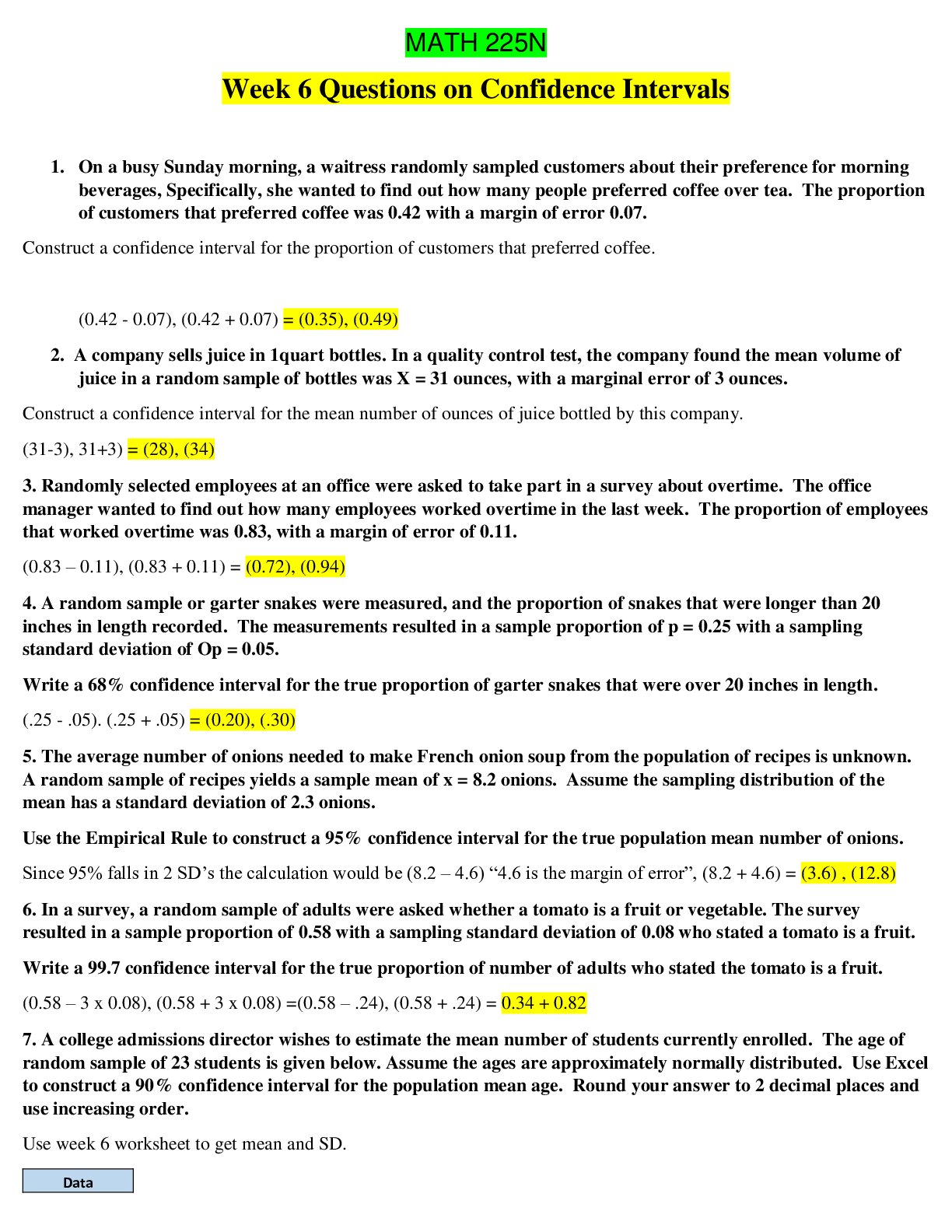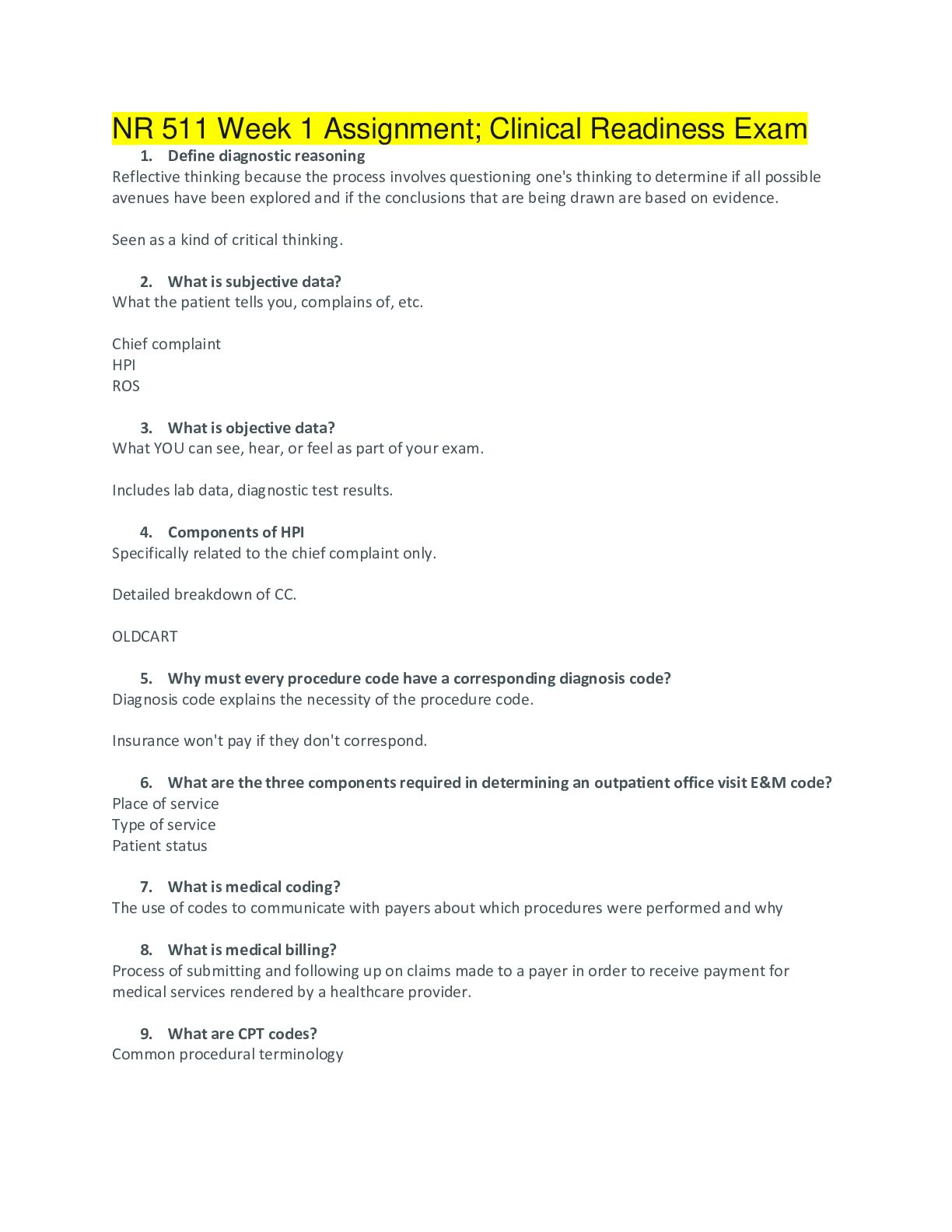Health Care > EXAM > 6512Final exam 1 graded A+ questions and answers (All)
6512Final exam 1 graded A+ questions and answers
Document Content and Description Below
Examination of the patient in the lithotomy, or knee-chest, position includes: The examiner can inspect the external and internal female genitalia and perform rectal examination to assess and palpa... te anal sphincter tone 2. To spread the breast tissue evenly over the chest wall, you should ask the woman to lie supine with: One arm over her head and a pillow under her shoulder. 3. An apical PMI palpated beyond the left fifth intercostal space may indicate: left ventricular hypertrophy. 4. Breath odors may clue the examiner to certain underlying metabolic conditions. The odor of ammonia on the breath may signify: ammonia-like suggests uremia, a renal condition; cinnamon- tuberculosis; musty fish or clover hepatic -failure; sweet and fruity - diabetic ketoacidosis; and foul or feculent- intestinal obstruction. 5. Which cranial nerves are usually evaluated during the examination of the eyes? III Oculomotor Motor, IV Trochlear, VI Abducens. 6. Loss of immediate and recent memory with retention of remote memory suggests: Dementia 7. Recent unilateral inversion of a previously everted nipple suggests: Cancer 8. A parent is advised to restrict contact or collision sports participation for their child. An example of a sport in which this child could participate is: Hockey or diving. 9. You are performing a two-point discrimination test as part of a well physical examination. The area with the ability to discern two points in the shortest distance is the: Fingertips. 10. A red, hot swollen joint in a 40-year-old man should lead you to suspect: Gout 11. Normal changes of the aging brain include: Diminished touch and pain 12. An examiner has rotated a brush several times into the cervical os. The brush was withdrawn and stroked lightly on a glass slide. The slide was sprayed with fixative. Which type of specimen requires this technique for collection? Cytology Smear 13. During a routine prenatal visit, Ms. T. was noted as having dependent edema, varicosities of the legs, and hemorrhoids. She expressed concern about these symptoms. You explain to Ms. T. that her enlarged uterus is compressing her pelvic veins and her inferior vena cava. You would further explain that these findings: Are usual conditions during a pregnancy. 14. You are examining Mr. S., a 79-year-old diabetic man complaining of claudication. Which of the following physical findings is consistent with the diagnosis of arterial occlusion? An individual or a patient with peripheral artery disease of claudication will have thin skin with localized pallor and cyanosis, a loss of body warmth in the affected area and loss of hair over the extremities. 15. The Mini-Mental State Examination should be administered for the patient who: Getting lost in familiar territory is a sign of possible cognitive impairment. 16. The physical assessment technique most frequently used to assess joint symmetry is: Inspection 17. Throughout the history and physical examination, the clinician should: The clinician should evaluate the whole patient including physical, emotional and social needs. 18. Inquiry about nocturnal muscle spasms would be most significant when taking the musculoskeletal history of: Older adults 19. The foramen ovale should close: At birth when the lungs become functional. 20. Palpation of a normal prostate in an older adult is likely to feel: Rubbery 21. You are interviewing a 20-year-old patient with a new-onset psychotic disorder. The patient is apathetic and has disturbed thoughts and language patterns. The nurse recognizes this behavior pattern as consistent with a diagnosis of: Schizophrenia 22. While collecting personal and social history data from a woman complaining of breast discomfort, you should question her regarding: Alcohol, tobacco and caffeine. 23. The Mini-Mental State Examination: estimate cognitive changes quantitatively. 24. Postural hypotension is defined as a _____ when the patient stands, compared with sitting or supine readings. Blood pressure dropped more than 20 mm Hg in systolic and more than 10 mm Hg in diastolic. 25. You are initially evaluating the equilibrium of Ms. Q. You ask her to stand with her feet together and arms at her sides. She lo [Show More]
Last updated: 1 year ago
Preview 1 out of 12 pages
Instant download
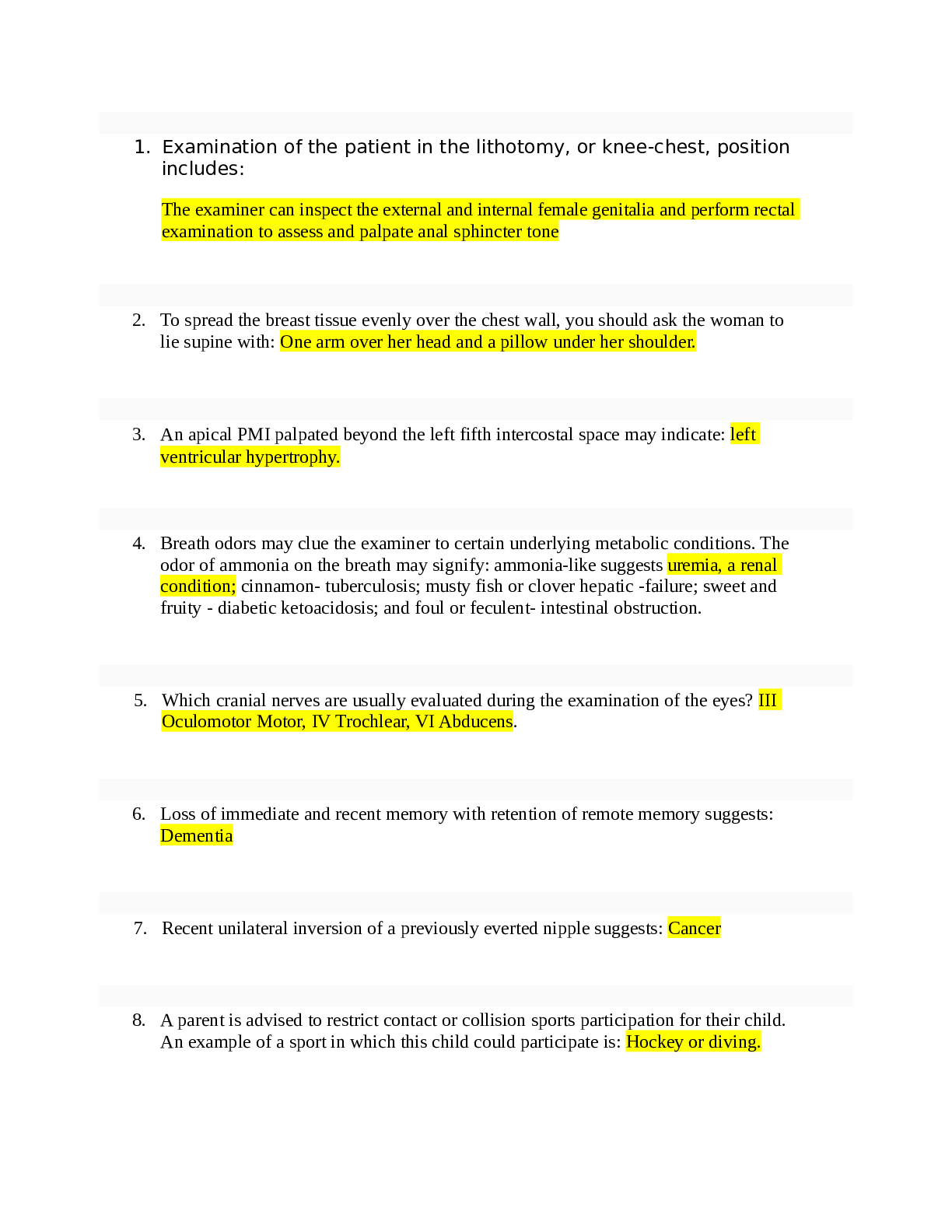
Buy this document to get the full access instantly
Instant Download Access after purchase
Add to cartInstant download
Reviews( 0 )
Document information
Connected school, study & course
About the document
Uploaded On
Jul 22, 2022
Number of pages
12
Written in
Additional information
This document has been written for:
Uploaded
Jul 22, 2022
Downloads
0
Views
44





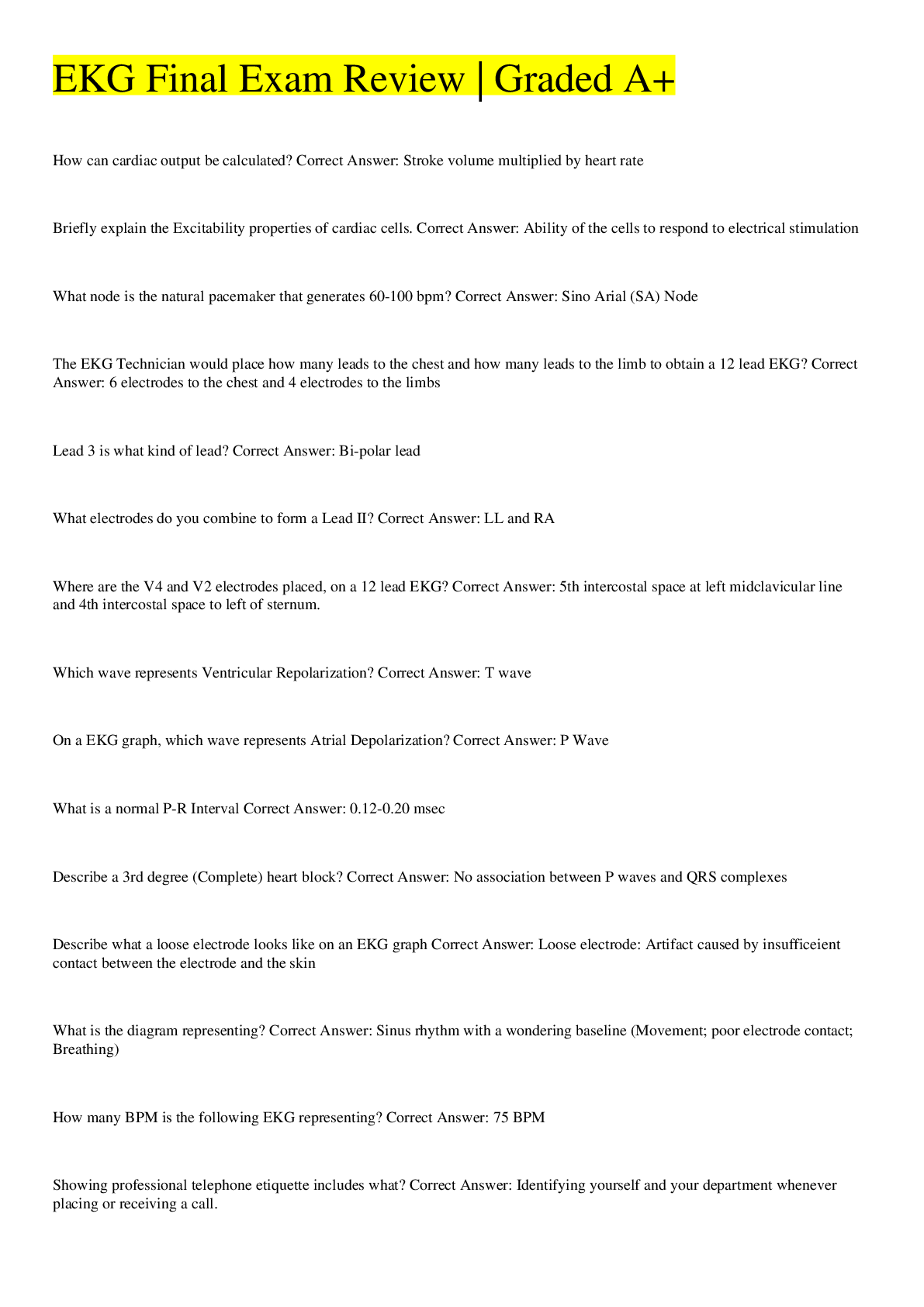

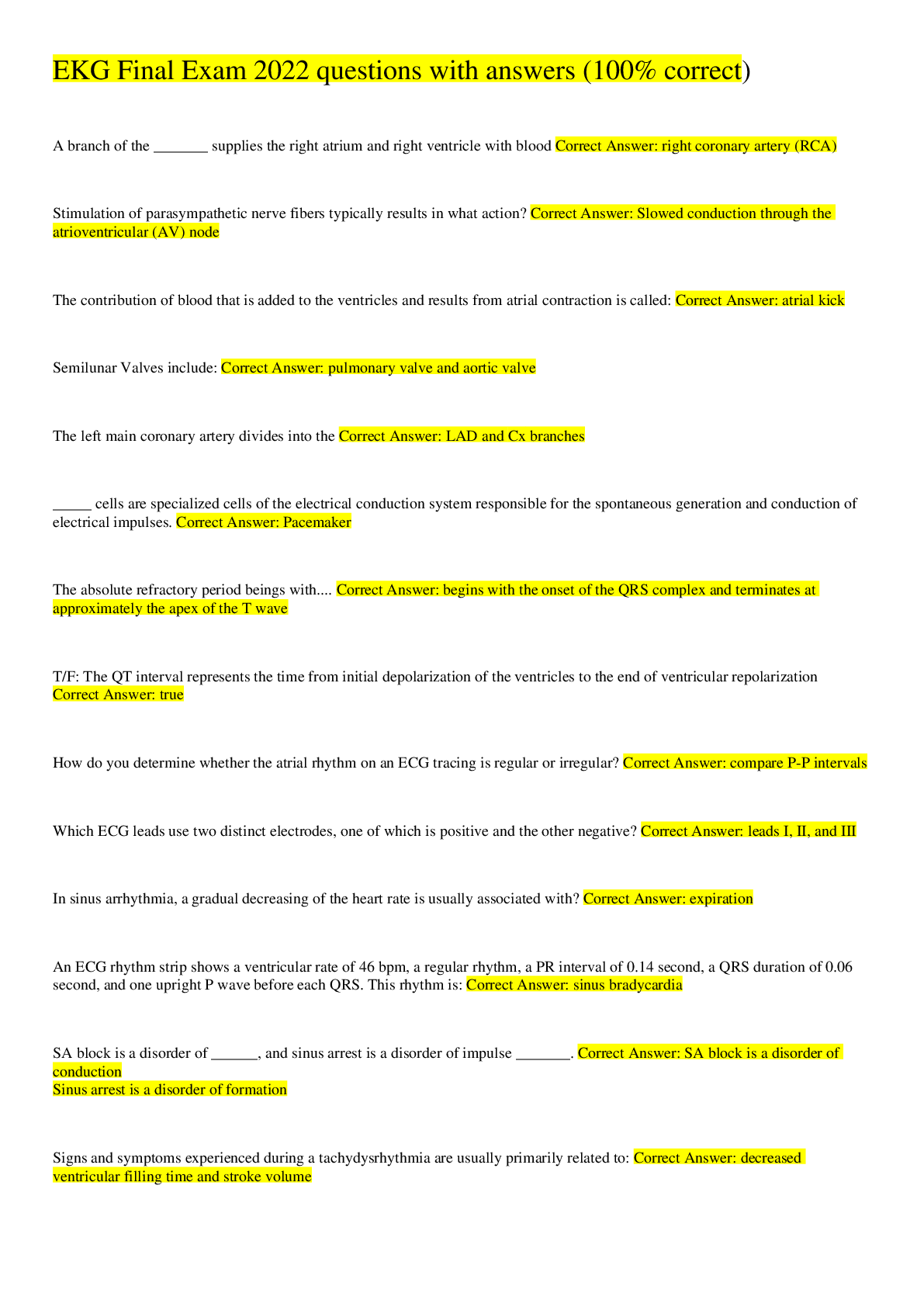
.png)

